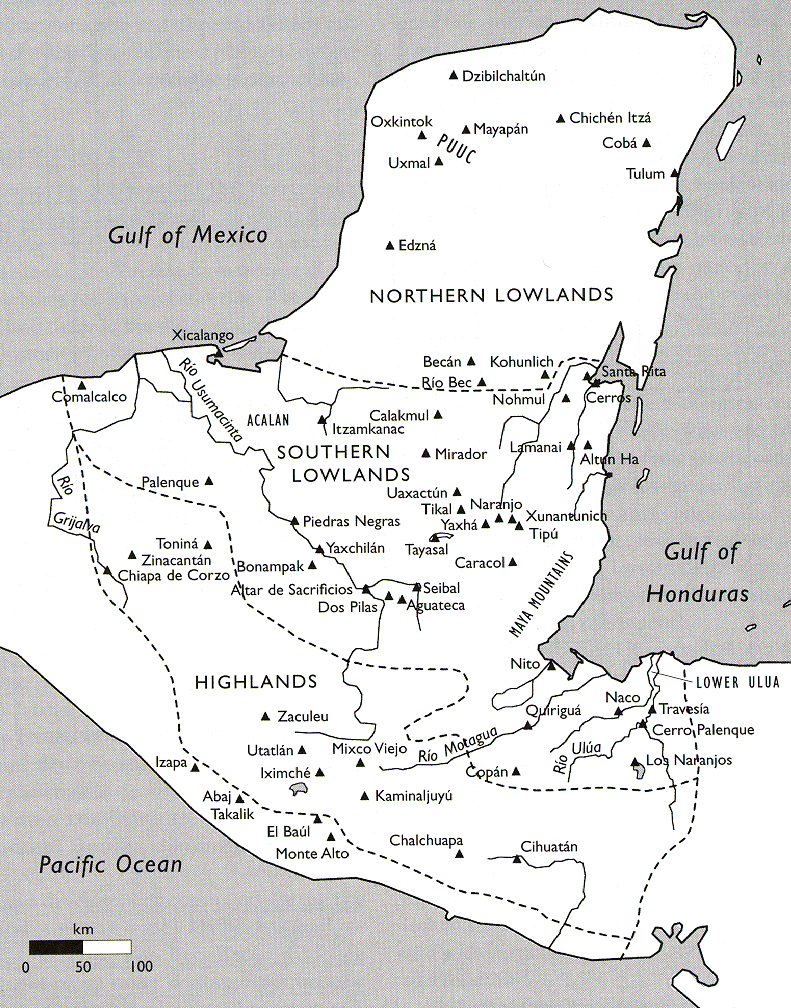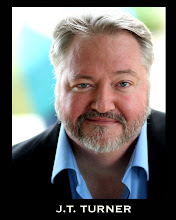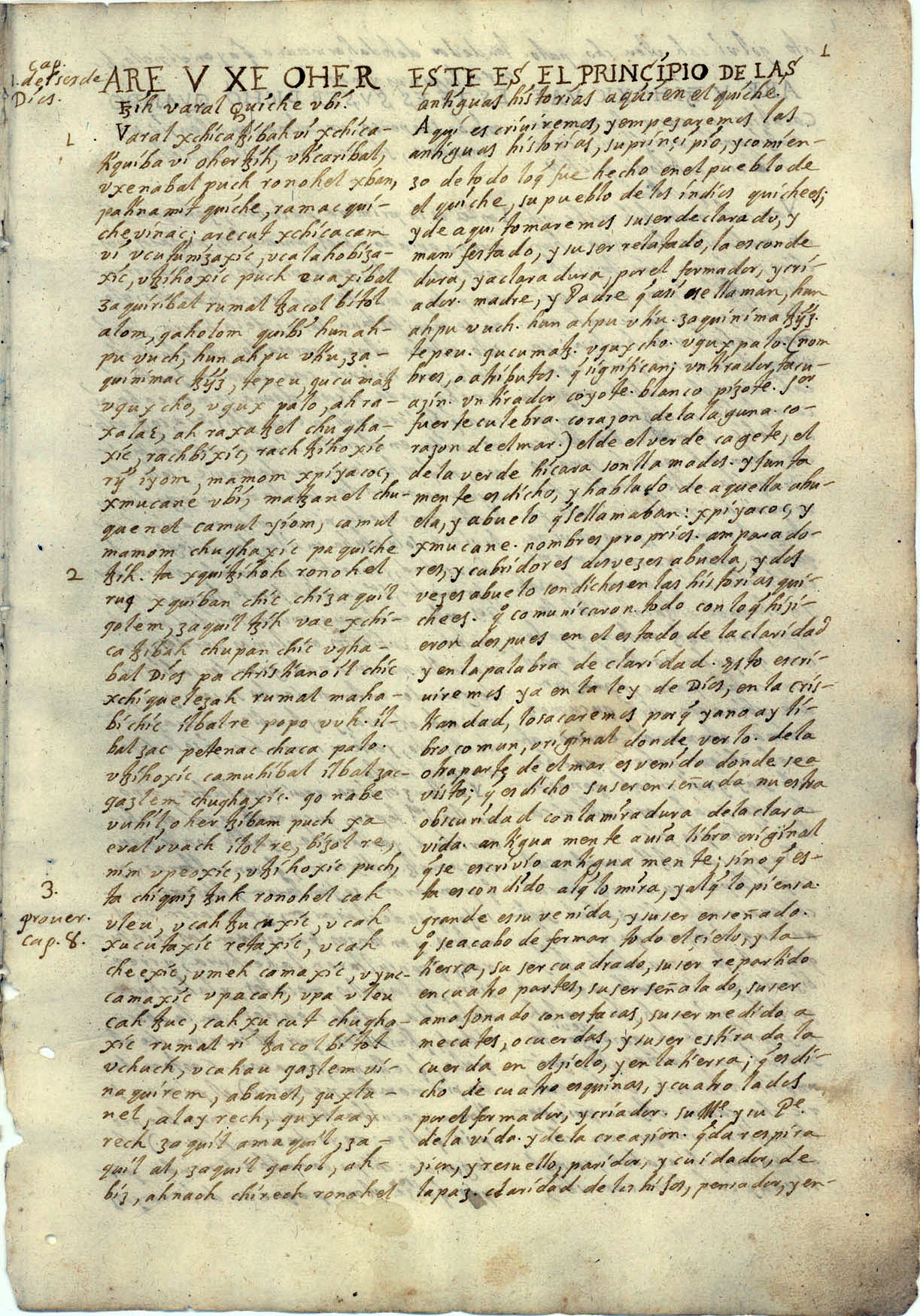
An original page from the Popol Vuh Translation, about 1701
As we discuss the Maya, and the Doomsday Date of 12/21/2012, it makes sense to touch on an important book, the Popul Vuh.
Much of what we know about the Mayan creation theory/myth come to us from this book. When the Spanish invaded the Mayan Kingdoms, many of the Mayan books were burned as a part of the process to convert them to Catholicism.The books were considered pagan in nature, and so tragically destroyed. One book that was destroyed was called the Popul Vuh. It gave the mythistory (yes, that is a word) of the Quiche Kingdom in the Guatemalan Highlands. It is known that most other Kingdoms shared this book's beliefs. But didn't I say it was destroyed? Yes, it was, but a Quiche convert to Catholicism recreated it in Spanish, and it was transcribed and translated by a Dominican, Francis Ximenez. .
A literal translation of Popul Vuh is "book of the mat", as the original was made of tree bark. But the general translation is accepted as "Book of the Community or Council". It has the stories of the creation of the world, and of man. Also the story of the "Hero-Twins" Hunahpu and Xbalanque, who play a major role in the creation myth. They were ballplayers, as were their Father, Hun Hunahpu, and Uncle, Vucub Hunahpu, before them.
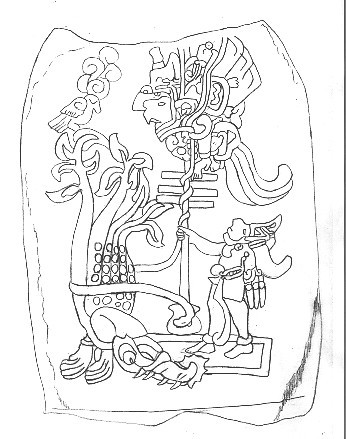
The Twins shooting a Bird Deity
Summoned to Xibalba, the Underworld, for playing ball too loudly, (oh shades of my own youth!), by the Lords of the Underworld, the father and uncle were defeated by one of the Lords' tests and sacrificed and Hun Hunahpu's skull was suspended in a trophy tree. When the daughter of one of the lords of Xibalba, approached this tree, the skull spat into her hand and thereby made her pregnant with the Hero Twins. The Twins grew up to avenge their father, and after many trials, finally defeated the lords of the Underworld in a ballgame. The Popol Vuh features other episodes involving the Twins as well (see below), including the liquidation of a pretentious bird demon, Vucub-Caquix, and of his two demonical sons. The Twins also removed their half-brothers from the scene, turning them into Howler Monkeys who were the patrons of artists and scribes. The Twins' final transformation into sun and moon establishes a metaphor for rule over earth and sky.
OK, so who cares? Well as we consider Mayan myths, the Hero Twins come into play again and again, and show how important Ball playing was in Mayan society. And when we discuss the Doomsday Date, the Ball Court plays an important role.
I should also mention that the Popol Vuh gives genealogies of the gods and the eventual rulers of Quiche. Of course many other kingdoms may have had variations in the legends, but based on various stone carvings, we know they were all similar to what we read in the Popul Vuh.
Next Up, The Mayan Cosmos.
J.T. Turner
Mayanist



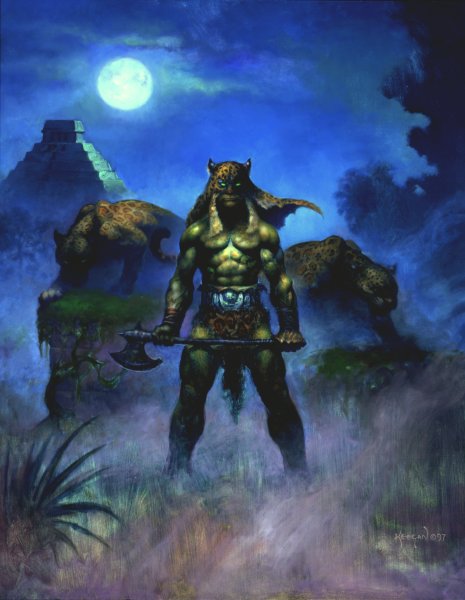





 Let us start our discussion of the Mayans and time.
Let us start our discussion of the Mayans and time.









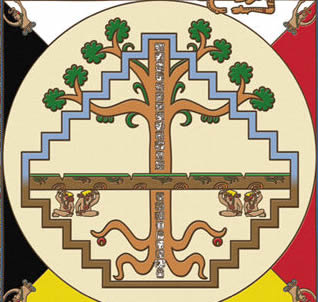

 Glyph of the sky
Glyph of the sky



 A movable stone marker
A movable stone marker


 The Twins shooting a Bird Deity
The Twins shooting a Bird Deity

 This entry is about the cultural structure of the ancient Mayans
This entry is about the cultural structure of the ancient Mayans



